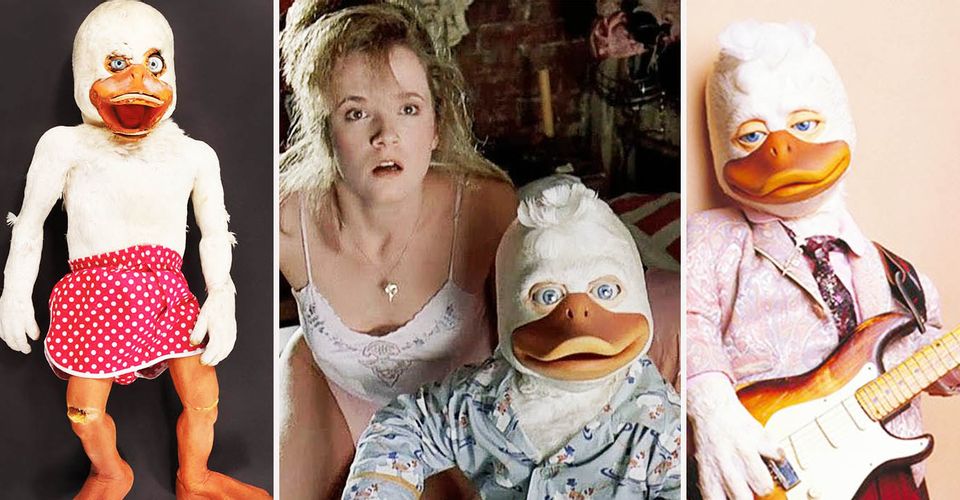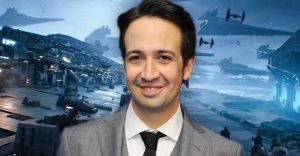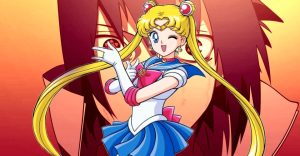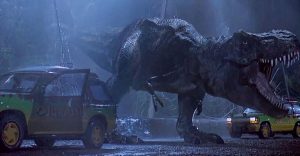15 Things You Didn’t Know About The Disastrous Howard The Duck Movie

On August 1, 1986, Howard the Duck was unleashed upon the world. It did not go well.
The movie, executive produced by George Lucas and directed/co-written by his pal Willard Huyck, was based on the popular Marvel Comics character created by writer Steve Gerber and artist Val Mayerik. It tells the story of how anthropomorphic duck Howard (Ed Gale) is whisked away from his home planet of Duckworld and plunked on Earth, where he befriends struggling rock star Beverly Switzler (Lea Thompson) and foils an intergalactic menace known as the Dark Overlord (Jeffrey Jones). Critics eviscerated the film, and audiences stayed away in droves, leading to an embarrassing $16 million North American gross.
Over the years, though, Howard the Duck has become a cult favorite. Many fans will happily laud it as a misunderstood masterpiece. Regardless of your take, there are plenty of behind-the-scenes secrets and little-known-facts about the film, its production, and its eventual reception. We’re about to spill some of the juiciest of them.
Here are 15 Shocking Things You Didn’t Know About The Disastrous Howard the Duck Movie.
15 It was the first Marvel movie

Believe it or not, Howard the Duck was technically the movie that kicked off the Marvel cinematic supremacy we know today. There had been a couple other feature-length comic book-based movies by 1986 — three Christopher Reeve-starring Superman flicks and Flash Gordon — but none had been based on Marvel characters. You’re reading that correctly: Howard the Duck was the first Marvel movie.
Prior to Howard’s appearance on theater screens, the only other Marvel character to get the cinematic treatment was Captain America. Good ol’ Cap appeared in a 1944 black-and-white serial, which had fifteen installments. Those, of course, were just shorts that played before the main feature.
These days, there are multiple Marvel movies each year, most featuring household-name heroes. It’s difficult to fathom that Howard would be such a pioneer, but he was.
14 It was supposed to be animated

Visual effects had come a long way by the mid-’80s, but they weren’t what they are today. CGI was still in its relative infancy, not yet ready to create entire creatures who could believably interact with human characters. For that reason, along with its comic book origin, Huyck and producer/co-writer Gloria Katz felt that Howard the Duck would work most logically as an animated feature.
There was only one hitch: they were developing the project with Lucas, who had a deal going with Universal Pictures. And that deal wasn’t for animated movies, it was for live-action fare.
The studio also wanted a big live-action hit for their summer slate. Lucas therefore suggested they shoot the picture with actors, a guy in a sophisticated duck suit, and special effects from his Industrial Light & Magic FX shop to blend everything together. In retrospect, it feels like an unwise choice.
13 Lea Thompson was devastated by its failure

When she signed on to play Beverly, Lea Thompson was on a career high. She’d just had a breakthrough role, playing Lorraine McFly in the mega-blockbuster Back to the Future. The sky appeared to be the limit for her. Howard the Duck brought the dream crashing back to Earth. In a DVD interview, she admits being “devastated” by the movie’s box office failure, saying it felt especially weird coming off a major triumph.
As fate would have it, that devastation would prove positive for Thompson. Eager to distance herself from the turkey with which she’d become associated, she decided it might be a good idea to take a part in a new movie that she’d already turned down. That part was Amanda Jones in the John Hughes-penned Some Kind of Wonderful. It brought her good reviews, and has gone on to become a teen classic. She also married the director, Howard Deutch.
12 A studio executive lost his job because of it

There was a lot of collateral damage as a result of Howard the Duck bombing. Willard Huyck, for instance, never directed another movie. Then there was poor Frank Price, the head of Universal’s motion picture division. Price shepherded many films to success at the studio, including The Breakfast Club and Fletch.
Despite that, he was on thin ice with the President and CEO, Sid Sheinberg. Price had already alienated Universal’s golden child, Steven Spielberg, a few years earlier, by telling the filmmaker that E.T. would only appeal to children. Then came Howard. Following the film’s dismal box office performance, tensions between Price and Sheinberg came to a head. The two reportedly engaged in an all-out screaming match as they blamed each other for its failure.
In the end, Price shouldered the blame and was forced to resign. His departure was immortalized by the trade publication Variety with the now-infamous headline “Duck Cooks Price’s Goose.”
11 A child originally played Howard, but the suit was too dangerous

Because someone small in size was needed to be inside the Howard costume, an idea was hatched that a child should play the role. Since puppeteers would control certain aspects and the voice would be provided in post-production, the plan made a certain amount of sense.
A young actor was promptly cast to fulfill this task. Unfortunately for everyone, the costume was too claustrophobic and uncomfortable for the child. The idea was quickly scrapped.
That turned out to be Ed Gale’s lucky break. Gale had previously auditioned to play Howard but was deemed “too tall.” The producers did, however, hire to him to do a couple of stunts that the child actor would not be able to perform. With that kid now out of the way, and with the movie needing to find a new Howard ASAP, Gale was formally offered the chance to take over the part permanently — a task he cheerfully accepted.
10 John Cusack and Martin Short almost voiced Howard

Although Ed Gale ended up wearing the Howard suit, he did not provide the character’s voice. The filmmakers were looking for something specific: endearing but sarcastic, quirky but witty. To that end, they auditioned a number of actors to provide the vocals.
Among them were John Cusack, who was gaining career heat from The Sure Thing and Better Off Dead. Comedian Martin Short, then known primarily as a cast member on the sketch comedy series SCTV, also tried out.
In the end, actor Chip Zien was awarded the part. The producers liked the nasal quality in his voice, which, when exaggerated, felt perfect for the titular character. Although he didn’t go on to become as well-known as Cusack or Short, Zien still works regularly. Most recently, he appeared on Amazon’s series Mozart in the Jungle and HBO’s The Night Of.
9 Tori Amos was originally supposed to play Beverly

For the part of Beverly Switzler, the filmmakers thought that it might be a good idea to cast a real singer, rather than making an actress sing. They considered a number of professional vocalists for the role. Cyndi Lauper and Belinda Carlisle of the Go-Gos are among those who were thought of.
Another was Tori Amos, who was not yet the beloved solo performer we know her as today. At the time, she fronted a band called Y Kant Tori Read. She had a great voice and a strong sense of how to perform onstage, which made her seem like an ideal Beverly.
Amos was offered the job. Then Thompson, who was fresh off the massive success that was Back to the Future, suddenly became available. Producers courted her for the role instead, and Amos was shown the proverbial door. In the end, it really didn’t matter, as she went on to have a successful music career.
8 Went down in Razzie history

The Razzie Awards are handed out each year to recognize the worst in film over a twelve month period. Given its poor reception, it should come as no surprise that Howard the Duck was nominated for multiple Razzies in 1986. It was up for seven of the dreaded booby prizes, and it won four: Worst Screenplay, Worst Visual Effects, Worst New Star (Ed Gale and others who briefly wore the suit), and Worst Picture.
What is surprising is that, in winning that last award, Howard the Duck was part of a rare moment in Razzie history. In 1986, two movies tied for Worst Picture, meaning that Huyck and crew had to share the (dis)honor with another film. The co-winner, or should we say co-loser, was none other than Prince’s Under the Cherry Moon, a picture that snagged eight nominations, making it even more loathed in Razzie voters’ eyes than Howard.
7 Hidden Star Wars connection

Inside the duck costume was actor Ed Gale and, occasionally, other people (like stunt performers). One person could not bring the character to life by himself, though. Various body parts, including his face, were controlled with wires and hidden gizmos, all of which had to be perfectly synchronized. Howard was essentially a great big puppet, necessitating a team of experts to make his movements as seamless as possible.
One of the puppeteers who helped “play” Howard was Tim Rose. You may not recognize his name, but you absolutely know his work. While employed on Star Wars: Return of the Jedi, he asked if he could play an intriguing-looking character he’d seen a design for. No one in the creature shop knew how prominent that character would turn out to be, so they said yes. Rose then stepped into the costume and appeared onscreen as Admiral Ackbar.
6 Howard’s “gloves” were extremely painful for Gale

Ed Gale experience some negative consequences from playing Howard. His fingers had to be taped together to fit into the three-fingered “glove” that was the duck’s hand. Being repeatedly contorted this way caused his fingers to stay like that for months after filming ended. In an interview on the DVD, Gale recounts how unpleasant the process was.
He also tells of a huge upside. In the post-Howard days, he had an occasion to meet with the legendary Mel Brooks about an upcoming project. When Gale told Brooks that he’d been inside the Howard costume, the Blazing Saddles director told him, “Anyone who’s in Howard the Duck can be in my movie!” Apparently, he was an admirer of the film’s offbeat comic approach. Just like that, Gale was cast as Dink in Spaceballs.
5 Cherry Bomb was a real band

Since Beverly’s all-girl band, Cherry Bomb, plays a significant role in the story, the filmmakers knew that music was going to be crucial to Howard the Duck. To help craft the band’s songs and image, they brought in British musician Thomas Dolby, whose song “She Blinded Me with Science” was a Top Five smash a few years prior. Dolby utilized quirky humor in his lyrics, which made him a natural for such an offbeat movie.
Dolby knew it was imperative Cherry Bomb come off as authentic onscreen, so he sought to ensure that would happen. He coached Lea Thompson in her vocal performance, made her and the actresses portraying the rest of the band learn how to play their assigned instruments credibly, and put them through choreography rehearsals. Dolby did a good enough job that a plan to possibly replace Thompson’s voice was scrapped, and Cherry Bomb actually looked like a real band.
4 Fans could call a Howard the Duck hotline

Studios have utilized a wide array of gimmicks to promote movies over the decades. There was a time in the 1980s when hotlines were used semi-regularly. The practice sprang out of the “party line” fad that was all the rage back then. People would pay money to be placed on a line with several strangers to talk about whatever their hearts desired. Hollywood co-opted — and slightly altered — this concept to plug certain films.
Universal established a number, 1-900-410-DUCK, that fans could call to hear one of four prerecorded messages from Howard himself. In them, he conducted conversations with other characters from the movie, performed a rap, and engaged in an assortment of dumb duck puns. Because callers had to pay by the minute, they made sure the messages were elongated.
Of course, the number has long since been decommissioned, but the audio has been preserved on YouTube.
3 The movie inspired a comic book series

Hold on, because we’re going to get all “meta” on you here. Howard the Duck is a movie that was inspired by a comic book. We all know that. But did you know that there was a comic book based on the movie?
It’s true! From late December 1986 through February 1987, Marvel released a three-issue series that was, as the cover proudly proclaimed “the official comics adaptation of the blockbuster new movie from Lucasfilm.” So it was a comic that was inspired by a movie that was inspired by a comic.
That’s not all! In 2016, the self-referential vibe took another step with Chip Zdarsky’s Howard the Duck comic book series. Issue #9 features a cameo from Lea Thompson herself. In the story, she teams up with Howard to fight noted X-Men villain Mojo. The actress even gets to see a little action, busting some martial arts moves on Mojo’s henchmen. It’s all a big, crazy adventure that plays with Howard’s history on both the page and the screen.
2 It led directly to the creation of Pixar

If you enjoy Pixar movies, you should probably thank the makers of Howard the Duck. The company wouldn’t exist had the movie been a blockbuster.
At the time Howard opened and promptly tanked, George Lucas was having a bit of a money problem. Personally, he was reeling from a costly divorce. Professionally, sales of Star Wars toys had dipped, and the construction of his Skywalker Ranch put him into some debt. He had to take drastic action to stay afloat.
Lucas opted to sell the computer animation division he’d recently established. The buyer was none other than Steve Jobs, the CEO of Apple. He paid Lucas a reported $10 million. Now free of the Lucas empire, the newly independent company began seriously advancing the art of computer animation, eventually settling on the name Pixar for their endeavor. The rest is history.
1 Lea Thompson wants to direct a remake

Although reviled at the time, Howard the Duck has garnered an appreciative following in the intervening years. Screenings of the movie are almost always popular events — and sometimes they yield incredible nuggets of information.
One such example took place recently. Howard the Duck screened at L.A.’s Beyond Fest, one of the biggest genre festivals in the country. They somehow snagged a 70mm print, giving fans a chance to see it in a format that few ever have. Lea Thompson turned out for the event and participated in a Q&A afterward.
It was during this time that she dropped a bombshell. The actress said that she felt inspired by a female director, Patty Jenkins, taking the helm of a great big, successful comic book movie, Wonder Woman. With that in mind, she is thinking of going to Marvel and asking them to let her direct a remake of Howard. Maybe Thompson was only joking. Hopefully, though she was serious. We would totally pay to see that!
—
Which camp are you in when it comes toHoward the Duck? Do you love it or hate it? Why? Give us all your thoughts in the comments.
About The Author

















